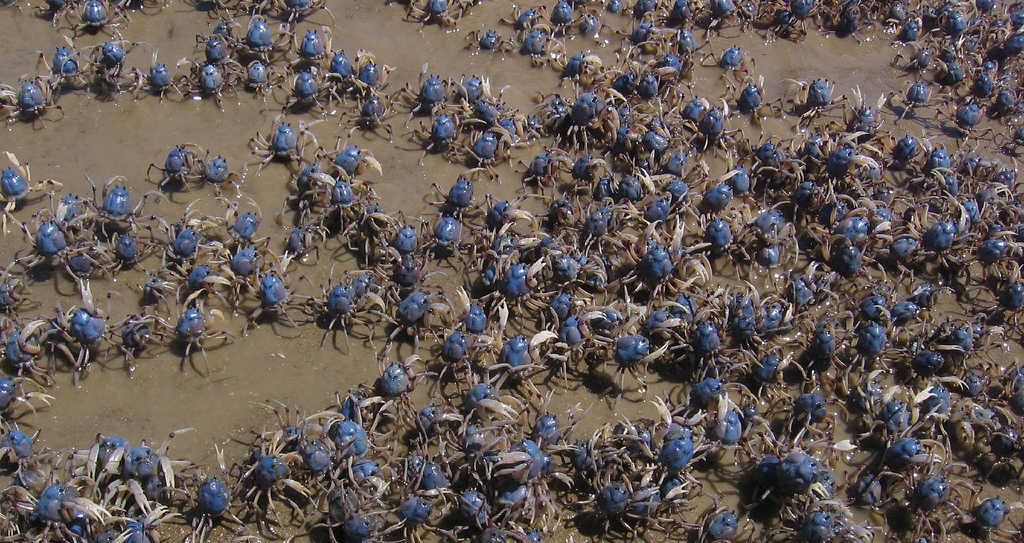
In 1982, computer scientists Edward Fredkin and Tommaso Toffoli suggested that it might be possible to construct a computer out of bouncing billiard balls rather than electronic signals. Spherical balls bouncing frictionlessly between buffers and other balls could create circuits that execute logic, at least in principle.
In 2011, Yukio-Pegio Gunji and his colleagues at Kobe University extended this idea in an unexpected direction: They found that “swarms of soldier crabs can implement logical gates when placed in a geometrically constrained environment.” These crabs normally live in lagoons, but at low tide they emerge in swarms that behave in predictable ways. When placed in a corridor and menaced with a shadow representing a crab-eating bird, a swarm will travel forward, and if it encounters another swarm the two will merge and continue in a direction that’s the sum of their respective velocities.
Gunji et al. created a set of corridors that would act as logic gates, first in a simulation and then with groups of 40 real crabs. The OR gate, where two groups of crabs merge, worked well, but the AND gate, which requires the merged swarm to choose one of three paths, was less reliable. Still, the researchers think they can improve this result by making the environment more crab-friendly — which means that someday a working crab-powered computer may be possible.
(Yukio-Pegio Gunji, Yuta Nishiyama, and Andrew Adamatzky, “Robust Soldier Crab Ball Gate,” Complex Systems 20:2 [2011], 93–104.)
